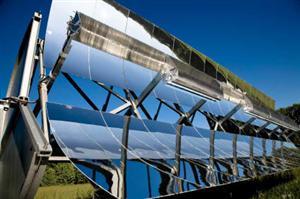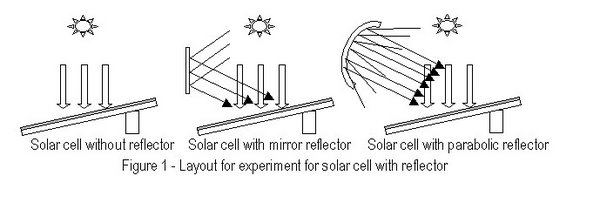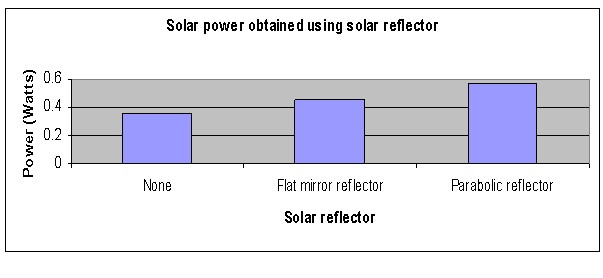Hypothesis
Using parabolic mirrors will help achieve the highest level of photovoltaic output from solar cells.
Overview
Solar cells
Solar cells are used to harness the power of the sun, converting light into electricity. They are made from silicon, which is found in abundance on our planet. There are generally 3 types of solar cells in existence:
Monocrystalline solar cells - with a good solar energy conversion rate between 12% - 16%. However, these cells are very difficult and expensive to manufacture.
Polycrystalline solar cells - with a lower solar energy conversion rate between 11% - 13% but which are cheaper to manufacture.
Amorphous solar cells - with the lowest solar energy conversion rate between 8% - 10% and which is the cheapest to manufacture
A solar cell typically produces an output voltage of about 0.5Vdc. This voltage can be increased by connecting the solar cells in a series. To increase the output current, the solar cells need to be connected in parallel.
Solar reflectors
Solar reflectors are devices used to reflect the parallel rays of the sun onto the surface of the solar panel to enhance the efficiency of the solar cells. They are normally parabolic in shape.
Scientific Terms
Solar cell, photovoltaic cells, solar concentrator, monocrystalline cells, polycrystalline cells, amorphous cells, ammeter, voltmeter
Conclusion
The hypothesis that the use of a parabolic mirror will provide the highest power output from the solar cell, and that this is followed by using a flat mirror - is proven to be true. The parabolic reflector helps to direct the most amount of sunlight towards the solar cell thus enabling it to produce electricity more efficiently.
The use of solar, wind and water energy to produce electricity is called"clean" or"green" energy. This is because these sources of energy do not produce any harmful waste (such as carbon dioxide) and do not pose a threat to our environment.
Also consider
The experiment can be repeated indoors using fluorescent lighting.
Try to repeat the experiment indoors in an air conditioned room at different temperatures, and observe whether the change in temperature affects the output of the photovoltaic cells.
Related videos
Hey there! Here are some awesome videos about this science project that we think you'll really like. They're not only super fun, but they'll also help you learn more about the science behind the project. So sit back, relax, and get ready to have some fun!!





